Scott Snyder expertly taps Ancient Greek myth and history to create a whole new set of villains and challenges for the Dark Knight.
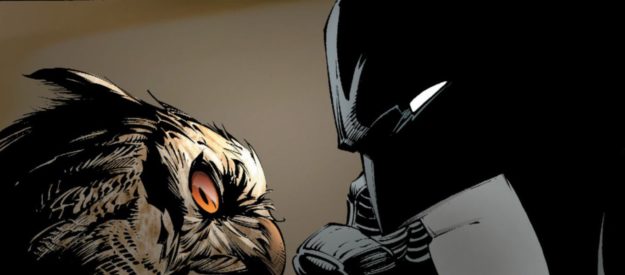
In the New 52 run of Batman, Scott Snyder and Greg Capullo introduced us to the Court of Owls (trade paperback 1 and 2), an ancient, underworld society in Gotham that seeks to excerpt influence through murder and intimidation. In classic detective-style, Batman slowly learns the details of the group, starting with a single image of an owl.
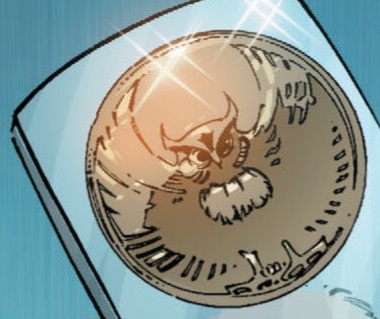
Batman immediately recognizes the significance.
It’s an Athenian Owl. It appeared on coins in Ancient Greece. It was a symbol of wealth and power.
This is textbook Greek history, literally on textbooks of Greek history (see below). The owl is synonymous with Ancient Greece, appearing on countless coins, vases, and texts. The owl’s prominence stems from greek mythology, specifically the goddess Athena, daughter of Zeus. Athens was her city, the olive was her tree, and the owl was her bird. ((Edith Hamilton, Greek Mythology (New York: Little, Brown and Company, 2013), 28.))
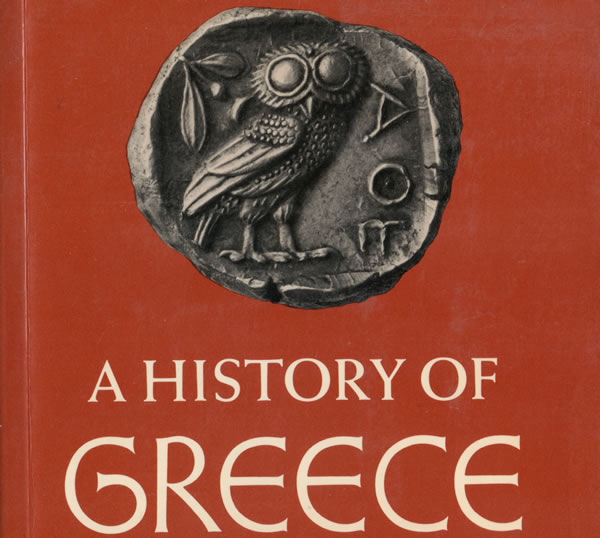
Appearances and stories of owls held power in ancient Greece. Plutarch tells us that while Themistocles was rallying the troops before the Battle of Salamis (480 BC), an owl flew overhead and perched on one of the ships. This supposedly convinced the remaining doubters to fight against the Persians that day. ((Plutarch claims he read this in several sources. Themistocles, 12.)) The Greeks won that battle against overwhelming odds.
After the Persian Wars, the influence of Athens rose to empire status and coins stamped with the image of Athena and her owl were numerous and valuable throughout Greece and her neighbors.
Thanks to Greg Capullo’s art, Batman’s owl is much more stylized and aggressive, as opposed to the wide-eyed, passive Athenian Owl. It is a welcome reinterpretation, especially for a group of villains who thrive on intimidation.
Paying Passage to and from Hades
As Batman unravels the existence of the Court of Owls, he continues to explore their ancient roots, telling us
The Court has an affinity for classical antiquity. In Ancient Greece, there was a tradition of placing coins beneath the corpse’s tongue before burial. Supposedly to pay for passage into Hades.
The rich sometimes had their coins made from a metal called electrum. A highly conductive alloy of silver and copper.
Scott Snyder turns the concept on its head when Batman learns that the Court of Owls utilize this metal in the mouths of its supporters to shock them back to life upon death–a reversal that has the dead paying their way to return from Hades. ((Although Batman says that electrum was made from silver and copper, the metal was more often silver and gold, sometimes containing copper and other metals. P.J. Rhodes, The Greek City States: A Source Book, 2nd ed. (Cambridge: Cambridge University Press, 2007), 37.))
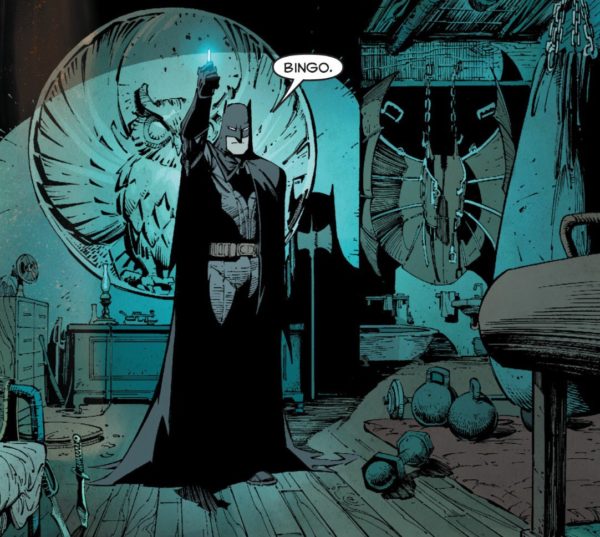
In addition, the Dark Knight says the coin was supposedly to pay passage to Hades, but the reality is every mention of the custom across 700 years of Ancient Greco-Roman literature (5th-century BC through 2nd-century AD) does so “in the context of an underworld journey.” ((Susan T. Stevens “Charon’s Obol and Other Coins in Ancient Funerary Practice,” Phoenix 45, no. 3 (1991): 215.))
The literary references are overwhelming–found in poems, plays, and histories. For example, playwright Aristophanes (c. 446–386 BC) evoked the concept twice. In Frogs, Dionysus heads to the Underworld. To get across the bottomless lake, Heracles informs him that “there’s an old ferryman who’ll take you across in a tiny boat, about so big, for two obols.” Dionysus responds, “Amazing what you can do with two obols!” ((Aristophanes, Frogs, lines 139-141. This translation comes from the David Barrett translation (New York: Penguin, 2007).)) The value of the transaction is vague and could easily mean a day’s wages or the price of a theater ticket. One historian has pointed out that “the joke would not work unless the audience was familiar with both the custom of providing the dead with one obol for passage to the underworld and the rampant inflation of the late fifth-century Athens.” ((Susan T. Stevens “Charon’s Obol and Other Coins in Ancient Funerary Practice,” Phoenix 45, no. 3 (1991): 216.))
The ferryman was known as Charon, and there are dozens of other references to him and the custom of paying a fee to cross into the Underworld in the likes of Pausanias, Aeschylus, Euripedes, Strabo, and Virgil. ((Most references found in Susan T. Stevens “Charon’s Obol and Other Coins in Ancient Funerary Practice,” Phoenix 45, no. 3 (1991): 215-299; Francis A. Sullivan, “Charon, the Ferryman of the Dead,” The Classical Journal 46, no 1 (1950): 11-17.))
In addition, Charon also makes numerous appearances in Greek art, especially vases. One artist, the so-called “Sabouroff Painter” (c. 440-430 BC), has over 330 surviving painted vases today, often depicting Charon. ((Francis A. Sullivan, “Charon, the Ferryman of the Dead,” The Classical Journal 46, no 1 (1950): 13.)) In one vase on display at The Metropolitan, Hermes beckons a youth to Charon and his boat.
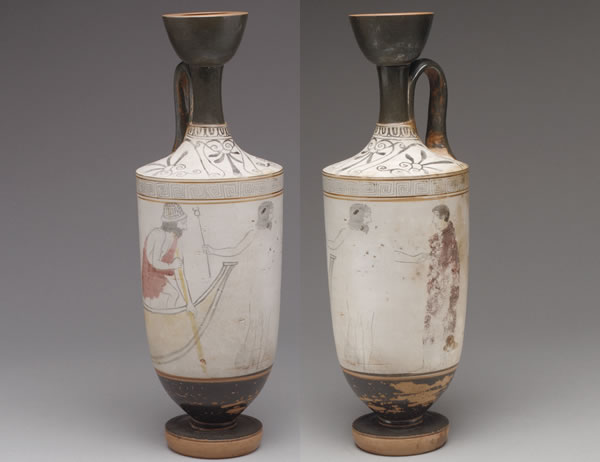
Yet, all this literary and art evidence does not mean universal acceptance in the ancient world. The Greek satirist Lucian (c. 125-180 AD) mockingly described the practice,
So profoundly have the common people been impressed with these doctrines that, when a man dies, the first act of his relations is to put a penny into his mouth, that he may have wherewithal to pay the ferryman: they do not stop to inquire what is the local currency, whether Attic or Macedonian or Aeginetan; nor does it occur to them how much better it would be for the departed one if the fare were not forthcoming, because then the ferryman would decline to take him, and he would be sent back into the living world. ((Lucian, Of Mourning, 10-12.))
Although it became a widely-known practice in antiquity, archeological discoveries have found it was not practiced universally. In fact, only a small portion of excavated graves from Ancient Greece have contained coins at all. ((Susan T. Stevens “Charon’s Obol and Other Coins in Ancient Funerary Practice,” Phoenix 45, no. 3 (1991): 215.)) For example, a 4th-century BC grave from Olynthus yielded only 66 coins from 644 graves and a Roman cemetery in Corinth had zero. ((Ian Morris, Death-Ritual and Social Structure in Classical Antiquity (Cambridge: Cambridge University Press, 1992), 106.))
All this conflicting evidence in support and against the adoption of the underworld toll in the ancient Greek and Roman worlds should not deter us from appreciating Scott Snyder’s use of the concept in Batman. What is important is that the custom was widely-known, even if it wasn’t widely adopted or respected in later years. And Snyder is in good company, as Charon was a key figure in Dante. Even Shakespeare evokes him—“ O, be thou my Charon, And give me swift transportance to those fields.” ((Troilus and Cressida, 1659-1660.))
With the history of these ancient superstitions, it becomes easy to see how a group with an antiquity fetish, such as the Court of Owls, would enthusiastically utilize these concepts and imagery. The result is Scott Snyder successfully injected ancient mythology and history into a modern-day comic, creating a compelling villain and story.
